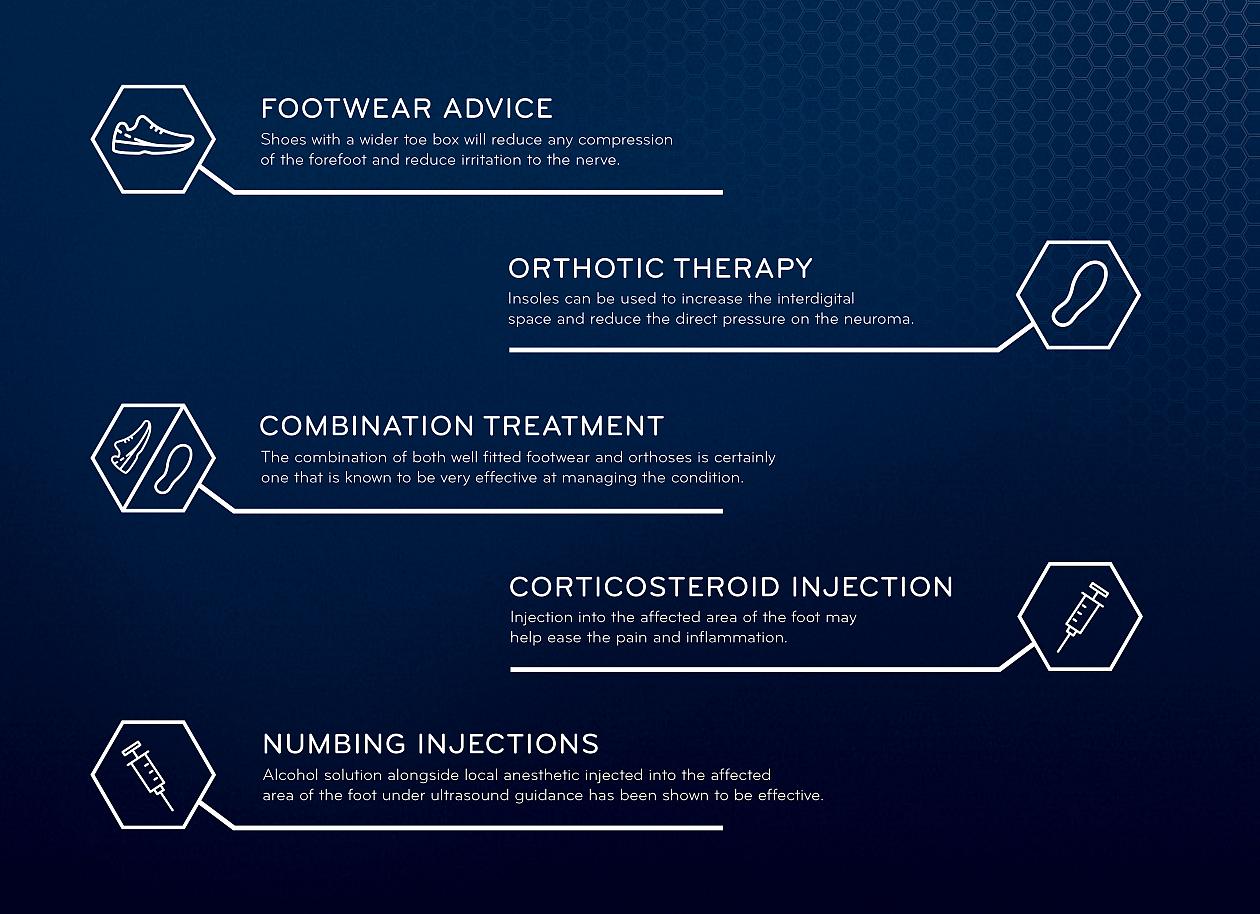WHAT’S THE SHARP PAIN BETWEEN MY TOES? – MORTON’S NEUROMA

Over the last couple of years we have seen an increase in the number of patients who are attending clinics complaining of a stabbing type pain that starts in the ball of the foot and sometimes spreads forwards into the toes. Often relief can be obtained by removing the shoes and massaging the foot and it seems to be aggravated by shoes that restrict and compress the forefoot.
So what could it be?
When patients describe the above symptoms my immediate thought is that it may be nerve related especially with the pain that radiates forward into the toes and eases with massage. Certainly one of the more common causes of this type of pain is a Morton's Neuroma.
What is Morton's Neuroma?
Morton's Neuroma is a thickening of the interdigital nerve, most commonly effecting the third and fourth interdigital space but possible in any of the interdigital spaces. As the nerve becomes thicker it can be irritated by the metatarsals moving next to it often creating an electric shock type sensation. Other symptoms include tingling, burning and stabbing type sensations which can radiate forward into the toes.
What causes a Morton's Neuroma?
Morton's Neuroma is described as an idiopathic condition which means that we aren't too sure what causes it. It's more common in women which is more than likely related to the style of footwear that females favour.
Diagnosing Morton's Neuroma:
Physical examination is important in the diagnoses of this condition. We would look to apply pressure to the neuroma by squeezing the inside and outside aspects of the foot together and applying pressure directly behind the neuroma with my thumb. We are trying to produce a palpable click known as a Mulder's click which often only occurs if a neuroma is present. Further diagnosis can be obtained by ultrasound or other imaging.
Treatment:

If non-invasive management fails then a surgical option is available.
Here at ACE we specialise in the management of the condition with orthotic therapy.
